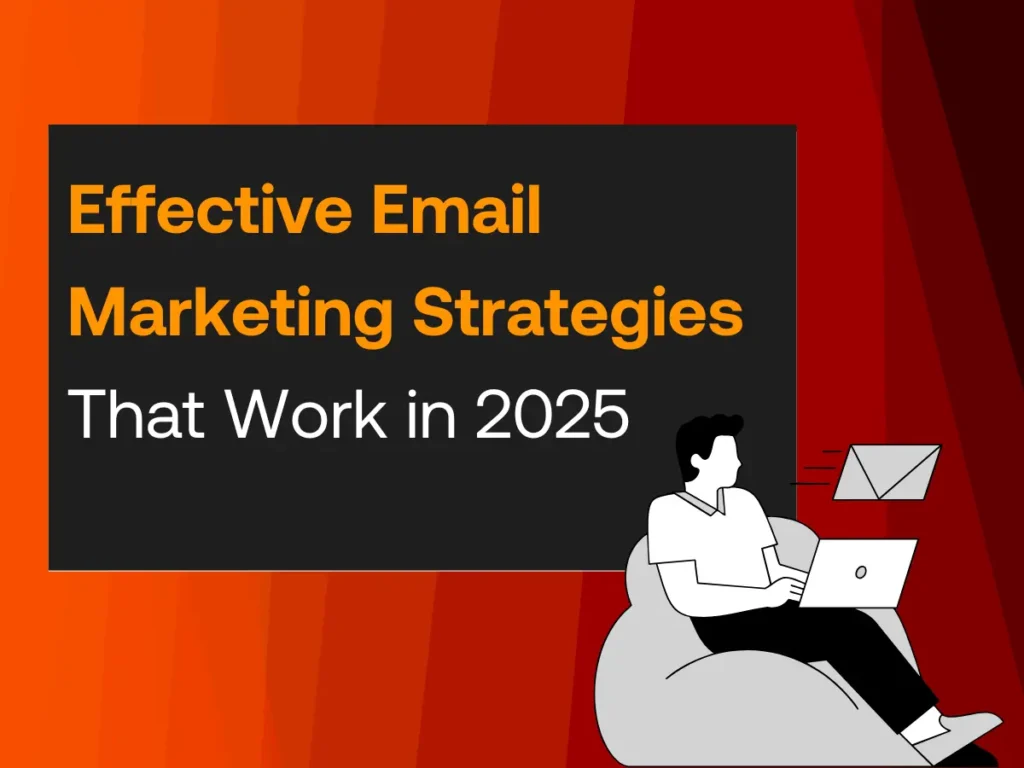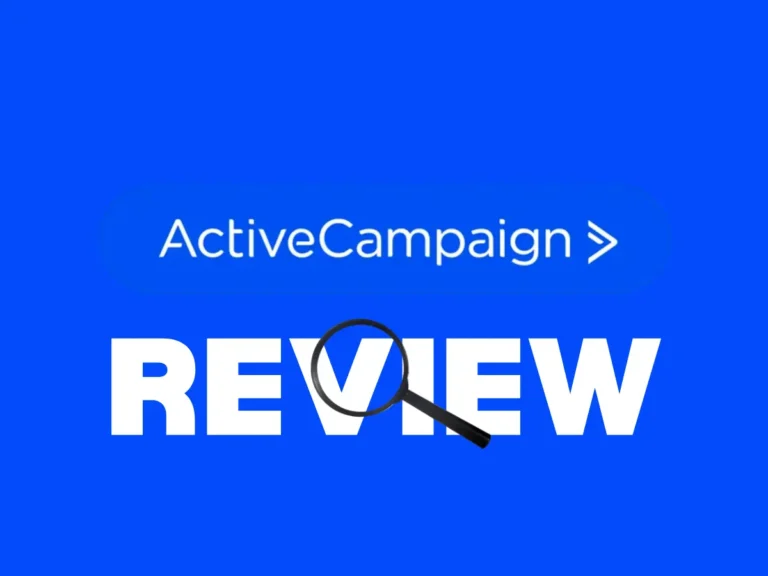
Email marketing has progressed greatly. With so many tools and email service providers, marketers have unlimited ways to reach clients.
It is definitely worth it! Email marketing can be profitable if planned. It gives you $64 for every dollar spent, the highest ROI of any marketing strategy.
You need a consistently converting technique to see results.
This involves setting up several types of email marketing strategies so you can adjust, track, enhance, and keep delivering an outstanding experience for your subscribers.
We’ve gathered a list of critical email marketing strategies that you can use to strengthen your campaigns and turn them into valuable marketing assets.
13 Effective Email Marketing Strategies To Consider
Your email marketing content and strategy should aim for high opens, clicks, and conversions. Knowing effective email marketing strategies makes this easier. Here are some ways to write emails that engage the right people:
1. Clean your email list
Email list cleansing involves eliminating long-outdated and unsubscribed email addresses from your contact list.
To get the most out of your marketing efforts, you must reduce your list on occasion. You can improve the quality of your list by deleting inactive contacts, unsubscribed ones, spammers, and bounced emails.
In the long term, this improves your sender’s reputation and email delivery.
2. Provide value every time
Next, it’s important to offer value to your subscribers for a successful email marketing strategies. Consistent value increases the likelihood that subscribers will open and read your emails. They might even be looking forward to your emails.
How can you “provide value”?
You should base your email strategy on what your customers want and need. If you sell clothes online, your clients might get frustrated by the inability to try them on. Ensure your email marketing plan addresses this issue.
Your email newsletters or content marketing campaigns could include online clothing-purchasing tips. Turn your general size guide into a custom size finder and link to it in emails.
This email content provides value to subscribers. Promotions and new product features are useful, but consumers expect them, so they don’t seem that helpful.
To avoid assuming what your subscribers want in terms of content, try asking them directly. You have several options:
- Allow new email list members to choose their content preferences.
- Ask current clients what they want from you and notice any changes.
- Ask subscribers to provide their thoughts via email.
While we’re discussing offering value to subscribers, accessibility is a vital factor to consider. Your audience won’t appreciate your emails if they can’t read them. Consider these two points:
- Mobile-friendly emails: Make sure your content works on desktop, smartphone, and tablet email clients. Brevo’s 40+ free responsive email marketing strategy template makes it easier.
- Screen reader-friendly emails: Ensure that your emails are accessible to visually impaired users. Use an easy-to-read font and detailed alt-text for graphics.
3. Optimize your CTAs (calls-to-action)
CTAs can greatly impact email click-through rates. So do your conversion rates. Spend effort on your CTAs to make them effective because weak ones mean fewer visitors and sales.
Try buttons and text CTAs and make sure your wording entices subscribers to click.
Here are some email marketing tips for great CTAs:
- Use a strong command verb like “shop,” “buy,” or “download.”
- Make people feel something.
- Encourage subscribers to click with “buy now to get 50% off.”
- Use FOMO like “Grab your seat—only 5 spots left!”
4. Share user-generated content
User-generated content (UGC) increases brand awareness. When subscribers see other consumers appreciating your brand and products, they’re more eager to learn more.
Including customer photographs, videos, reviews, and tales in your emails builds community and boosts clicks. Up to 79% of shoppers think UGC influences their purchase, according to a study.
If you’re having trouble finding user-generated content, consider creating a hashtag campaign. Encourage customers to tag you on social media and showcase your items to spread the word and gather UGC.
Aside from increasing click-through and conversion rates, user-generated content is vital for developing a community around your business. It creates a two-way relationship between you and your customers.
5. Connect with social media
Social media is an important part of effective email marketing strategies. There are many ways these two digital marketing channels can work together to grow your company.
First, connect social media CTAs in email campaigns and newsletters.

You can share email content on social media depending on the campaign. All you have to do is generate a shareable link; simply click “share on social media.”.
The use of social media can help increase your email list. You can use the “share on social media” function to distribute an email signup form and build your audience across platforms.
In contrast, incorporating social media links in a welcome email to new subscribers introduces them to your platforms.
6. Write effective subject lines
Your subscribers initially notice your subject line. Because 35% of email subscribers read emails only on the subject line, a weak subject line will not get them to click.
Investing time in subject lines can make the difference between many clicks and none.
Inbox competition is fierce today. People receive dozens of marketing emails weekly. You must make yours stand out without sounding commercial.
Here are a few things to consider.
- Keep your subject line 50–60 characters for readability.
- Use action-packed words.
- Set email body expectations.
- Use subscriber names in topic lines to personalize information.
Investing time in subject lines can make the difference between many clicks and none. Inbox competition is fierce today. People receive dozens of marketing emails weekly. You must make yours stand out without sounding commercial.
Here are a few things to consider:
- Keep your subject line 50–60 characters for readability.
- Use action-packed words.
- Set email body expectations.
- Use subscriber names in the topic lines to personalize information.
7. Use segmentation to send more targeted content
Segmenting your email list into like-minded groups lets you send more targeted information. You might segment by demographics, interests, activities, or customer profile information like location or occupation.
You can collect this data through your signup form. Consider asking new subscribers about things like:
- What is their industry/position?
- How often do they want to get your emails?
- Where they are located in the world?
- Which of your products/services do they like?
Other email segmentation strategies include grouping contacts based on the email links clicked or the lead magnets signed up through.
8. Re-engage inactive subscribers
There are various reasons contacts may disconnect. Re-engaging them is worth the effort.
Existing customers, especially unengaged ones, are usually easier and cheaper to sell to than new ones. New clients cost five times more than old ones.
An effective email marketing strategy must include re-engagement.
When creating your re-engagement email campaign, try to warm up chilly subscribers. Give them something fresh or show them another side of your business to attract their interest.

Here are some ideas for re-engagement campaigns:
- Keep subscribers informed about your business and value.
- Offer exclusives to unengaged contacts.
- Highlight new content.
- Ask your audience to respond.
- Use a birthday or holiday to reconnect.
9. Run trigger-based campaigns
You can send trigger-based emails or transactional emails to contacts based on their activities.
For instance, a link to content in one email can generate three follow-up emails for subscribers who visited the link. Reversing this works too.
If a subscriber doesn’t click the link, send another email with a query or a piece of content they might like.
Trigger-based campaigns keep subscribers informed. Instead of sending everyone the identical monthly newsletter and weekly promotional email, contact your audience depending on their business interactions.
Best part? Marketing automation sends all emails. Just set the triggers.
10. Personalize your emails
Did you know that 70% of brands don’t personalize emails?
That result is even more alarming when you learn that 91% of consumers are more likely to buy from a company with relevant offers.
Today, email personalization is something that all organizations, regardless of size, can and should do. It gives a more personalized customer service experience and is simple to implement.
Senders are more likely to open emails with the contact’s first name in the subject line.
Consider these personalized email tips:
- Send emails using subscriber names in the subject line, greeting, or body.
- Promote content based on subscriber behavior.
- Use customer purchases to recommend products.
- Celebrate subscribers’ birthdays with a coupon.
- Lock in sales with abandoned cart notifications.
- Automated, personalized messaging streamlines sales.
- Recap your client history.
Digital marketers greatly benefit from personalized emails. Luckily, email marketing tools like TechDella make personalizing emails easier than ever.
11. Send emails at the best time
Emails sent throughout the day and at night have substantially different open rates.
Think about when subscribers are most likely to check email. If you want to catch them at work, send emails between 9-5 instead of on Saturday morning.
Try sending emails at different times and tracking the open and click rates.
12. A/B test your email content
Split testing (A/B testing) enables you to test alternate content and subject lines in the same email to find what works best.
Each A/B test provides valuable data for future campaigns. If questions get opened more than others, include them in future campaign topic lines.
Another option is to check whether your audience likes emojis in email copy by monitoring your campaign’s click-through rate.
You might want to test the following elements in your emails:
- Subject lines for emails
- Send email copies of CTAs
- Email design
- Link in email.
- Sending emails
To optimize highlighted content, focus on one piece at a time to identify the most effective changes. Mix up your emails and offer links to various stuff. Send subscribers engaging blog entries, extended case studies, video series, and other media.
13. Track your metrics.
You should track your email opens and click-through rates. This is just the beginning of email marketing statistics.
Tracking email marketing campaign performance helps you improve them. Factors such as unsubscribe, bounce, and cart abandonment rates can significantly impact your email marketing strategy.
Wrapping up
Composing a good email is one thing. Creating an effective email marketing strategies is another. It’s how you engage your audience, increase sales, and build a sense of community around your company. Email marketing campaigns depend on optimizing subject lines, content, and CTAs.
Try a free email marketing platform like Techdella, which does everything for you. Send only relevant content to subscribers, use A/B test emails to see what works, and create personalized trigger-based campaigns.




